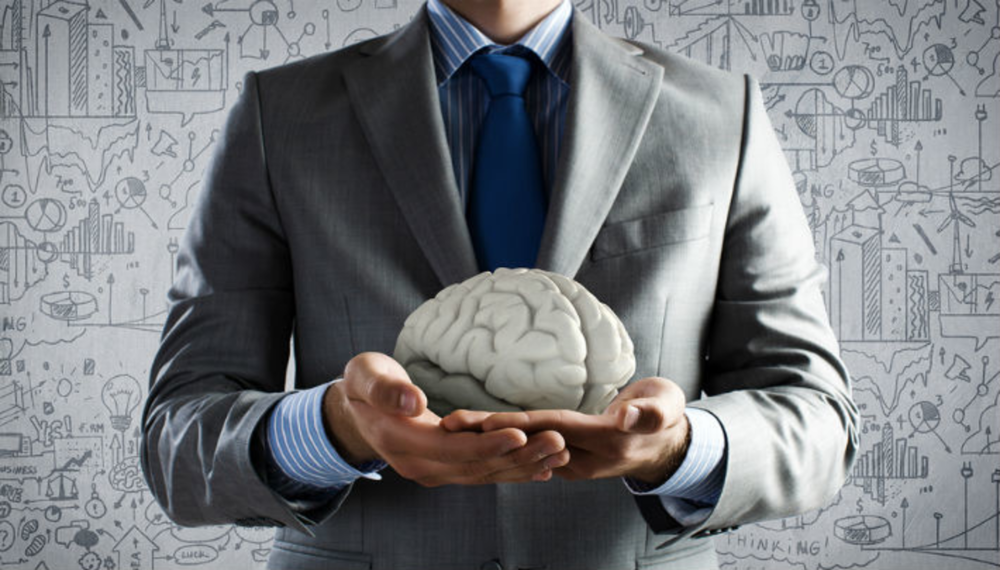All marketers want to get inside consumers’ heads. But understanding their decision-making processes is no easy feat. To truly comprehend the conscious and subconscious workings of the human brain, marketers need to understand cognitive neuroscience and cognitive psychology.
Cognitive Neuroscientist Dr. Carmen Simon distinguished the two fields at an Advertising Week panel in New York. Put simply, cognitive neuroscience is the study of how the brain operates, she explained, while cognitive psychology is the study of cognitive functions—such as memory, creativity, and decision-making. It’s up to marketers to leverage both to get consumers to act in their favor.
“All we have to do is convince the consumer to do something,” said Ron Park, fellow panelist and VP of analytics for performance marketing agency Merkle.
So how do consumers make decisions, anyway? According to Simon, there are three key decision-making routes, which she describes as follows:
- The Pavlovian route: When the brain subconsciously alters behavior in a reflexive-like response, such as retracting a hand when it touches something hot or shifting the eyes when turning one’s head.
- The habitual route: When people repeat actions that tend to serve them well. Eventually, these actions can become subconscious behaviors. People can also learn to form associations between different stimuli.
- The goal-oriented route: When people make conscious, thoughtful decisions that are driven by positive outcomes and require more cognitive power.
Simon advised marketers to create campaigns that focus more on eliciting reflexive or habitual responses because they don’t require consumers to think as much. However, Bill Besselman, panelist and VP of integration and digital strategy for Under Armour, said that companies can benefit from leveraging all three.
For example, he said that the sports apparel brand’s marketing follows the Pavlovian route by featuring visuals and sounds that play off of the biological aspects of fitness, the habitual route by emphasizing the importance of everyday practice, and the goal-oriented route by conveying the power of determination.
“If you can put all three of those together, you can create the power of much more than one plus one plus one is three,” he said.
Rewards also play a critical role in the decision-making process. Indeed, Simon said that the brain is always aiming to move toward rewards or prevent them from slipping away. Therefore the following four disciplines can have a major impact on customers’ decision-making.
Effort: How much energy they will have to put forth to obtain the reward
Time delay: How long they will have to wait until they obtain the reward
Risk: The chances that the customer will lose the reward or experience other struggles
Social: How obtaining the reward will reflect the customer’s personality and values
Of course, there are a number of other factors that can influence whether a customer performs a desired action. Here are three other concepts marketers should keep in mind.
Don’t underestimate the power of emotion
Marketers often focus on the benefits of their products or services, Park said, like cost or convenience. However, the VP of analytics said that professionals should also focus on emotions—or as Simon defines them, the states people feel as they move closer or further away from rewards.
So instead of just asking a consumer whether he cares about price, ask him why he cares about price. Does the sense of getting a good deal make him feel smarter or more confident? Identifying these emotions will help marketers make sense of the functional benefits of their products.
It’s also important for marketers to understand the emotional connections consumers have with competitors’ products, Besselman said. This way, he said, marketers can identify what draws consumers to other brands and better differentiate their own approach.
Jonathan Gutman’s Means-End Chain approach suggests that all consumers have personal values and that these values ultimately sway consumer choice. In other words, people often consume products and brands that help them achieve their desired outcomes.
However, consumers’ personal values and actions don’t always align. For instance, a consumer may consider good parenting a personal value, but that doesn’t mean that the consumer is actually a good parent, Park said. This is known as the Value-Action Gap.
Marketers that can identify consumers’ personal values and offer solutions to help fill this gap can provide these consumers with a real benefit.
Incorporate the old and new
When asked if they would rather see something familiar or see something novel, many people would say novel, Simon said; however, people are creatures of habit and actually tend to be drawn to the familiar. Therefore, Simon recommended incorporating both new and traditional elements in one’s marketing mix.
*Update 10/1/2015: Goal-oriented route further defined and Besselman quote corrected






